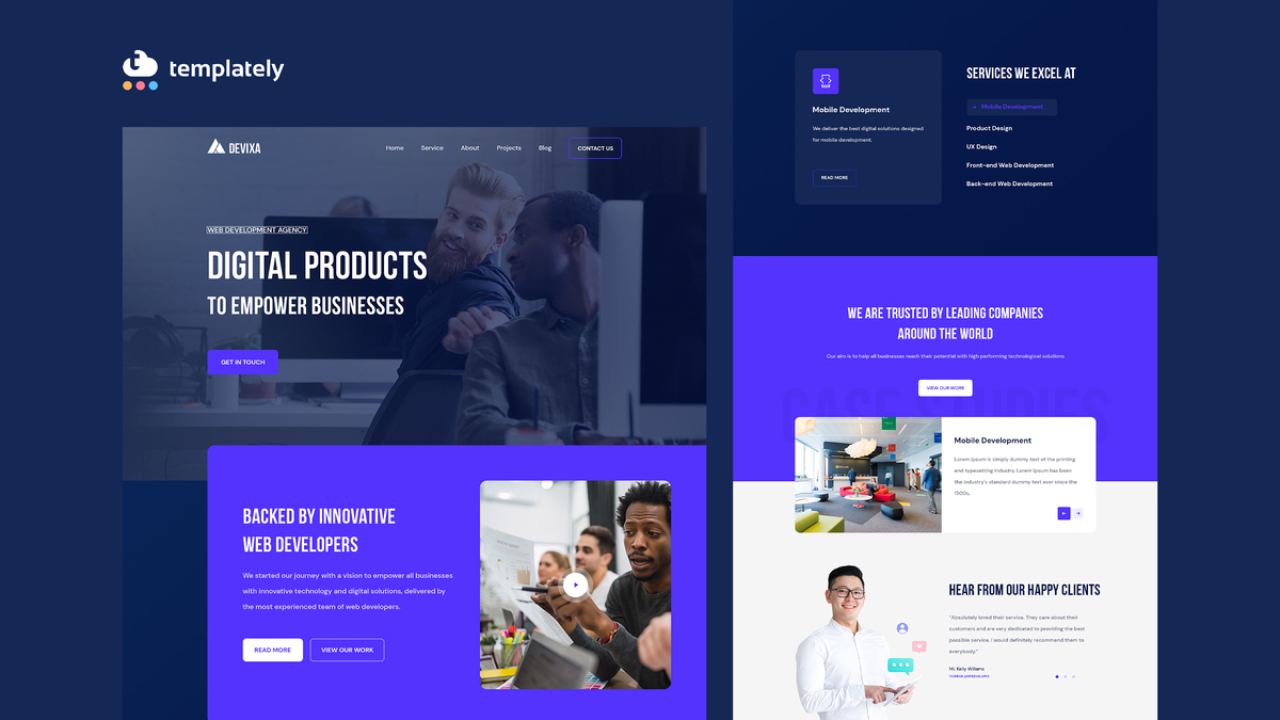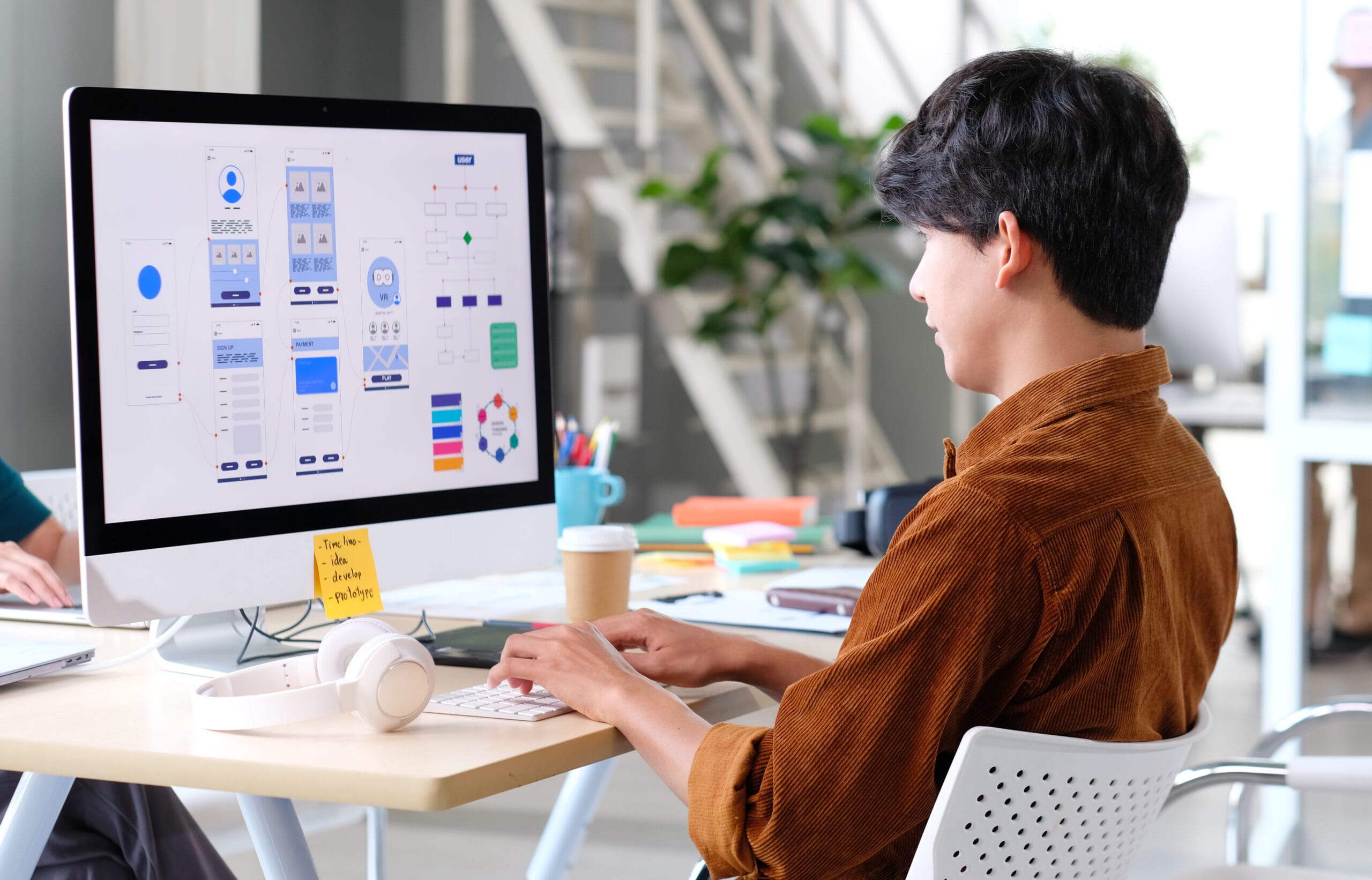Website design factors that ensure accessibility and readability
Checking Out the Numerous Sorts Of Website Design and Their Unique Benefits
The landscape of website design encompasses a range of styles, each offering distinctive advantages that cater to various user demands. Minimalist and level designs emphasize quality, while receptive and worldly designs enhance flexibility throughout devices. Illustrative and typography-driven strategies intend to enhance interaction and emotional vibration. Recognizing these diverse kinds can substantially influence customer experience and brand assumption. What lies below the surface area of these style choices?
Minimalist Website Design

Minimal website design often integrates a minimal shade combination and uncomplicated typography, which not only boosts aesthetics but also strengthens brand name identity. The lowered intricacy can cause much faster loading times, further improving individual satisfaction. Furthermore, by reducing visual clutter, individuals can involve with content better, leading to improved comprehension and retention. In general, minimal website design promotes a seamless individual experience, making it a prominent option for brands intending to convey clearness and expertise in their online existence.
Responsive Web Design
Responsive Web style has ended up being important in today's digital landscape, making certain mobile compatibility for customers throughout numerous tools. This method greatly improves user experience by offering smooth navigating and availability, despite display size. As even more individuals access the Web on tablets and smartphones, the value of responsive layout remains to expand.

Mobile Compatibility Importance
As mobile phone usage continues to rise, ensuring internet sites are compatible with various display sizes has come to be vital for efficient interaction and involvement. Mobile compatibility, usually achieved via responsive Web design, allows web sites to adapt seamlessly to mobile phones, tablets, and various other devices. This adaptability not only reaches a more comprehensive target market however additionally boosts brand name integrity. A website that functions well on mobile gadgets mirrors professionalism and reliability and interest to customer needs. In addition, search engines prioritize mobile-friendly websites in their positions, making compatibility a vital variable for online visibility. By investing in mobile compatibility, businesses can improve their digital existence and cater to the expanding number of individuals who access info on the go. For that reason, prioritizing mobile-responsive style is essential in today's electronic landscape.
Improved Customer Experience

Apartment Design
Flat design is a minimal technique to Web style that highlights simplicity and clearness. By getting rid of three-dimensional components such as darkness, gradients, and structures, level style creates a visually appealing interface that focuses on material and performance. This design promotes an instinctive navigating experience, as customers can swiftly determine crucial functions and activities without distraction.
Among the key advantages of flat layout is its responsiveness throughout different devices and display sizes. Its tidy lines and uncomplicated formats adapt flawlessly, making certain a constant experience for users on mobile, tablet, or desktop computer platforms. Additionally, flat design commonly integrates bold shades and typography, enhancing aesthetic impact and brand recognition.
Moreover, the simpleness intrinsic in flat style leads to much faster packing times, which adds positively to customer contentment - web development. In general, flat layout remains a preferred option for modern Web development, lining up with contemporary aesthetic choices while delivering exceptional usability
Product Style
Material Style stands for a layout language created by Google that concentrates on developing a user-friendly and cohesive user experience throughout electronic systems. This method emphasizes the use of grid-based formats, receptive computer animations, and deepness impacts such as illumination and shadows, which help to produce a sense of power structure and spatial connections. By imitating the real world, Product Design enables customers to interact with digital interfaces in a much more all-natural and engaging fashion.
Among the vital advantages of Material Style is its flexibility throughout numerous tools and screen sizes, making sure a regular experience for individuals. Additionally, it advertises a clear visual language that enhances use, making it easier for customers to browse intricate applications. The consolidation of dynamic colors and bold typography additionally plays an important function in accentuating crucial elements, thereby boosting general user interaction - web design. As A Result, Product Style has actually ended up being a popular selection among designers looking for to produce visually appealing and practical websites
Typography-Driven Layout
Typography-Driven Layout focuses on the tactical use kind to enhance the aesthetic and useful facets of a site. This style approach prioritizes fonts, font dimensions, spacing, and hierarchy to create visual rate of interest and guide individual experience. By very carefully picking typography, developers can share brand identity and stimulate feelings, making the content a lot more easily accessible and engaging.
Effective typography enhances readability and functionality, guaranteeing that customers can conveniently navigate the site and absorb details. The best mix of type can also establish a clear aesthetic hierarchy, allowing users to promptly determine vital messages and contacts us to action.
A typography-driven method can be her response adjusted to various devices, ensuring uniformity throughout systems. This versatility is essential in today's multi-device landscape, where user experience is paramount. Inevitably, Typography-Driven Style serves not just as an artistic selection but additionally as a practical component that considerably impacts Visit Website an internet site's performance.
Illustratory Website Design
Illustratory Web style utilizes visual narration techniques that can considerably enhance individual engagement. By integrating unique pictures, websites can produce a memorable brand name identity that reverberates with their target market. This method not just astounds visitors but additionally interacts messages in a visually engaging way.
Visual Storytelling Methods
A plethora of Web designers employ visual storytelling methods to produce engaging and immersive user experiences. This approach combines format, typography, and imagery to narrate a tale that resonates with individuals on a psychological degree. By integrating compelling visuals, designers can effectively communicate messages and stimulate feelings, guiding site visitors through a brand's trip. Infographics, animations, and interactive elements offer to improve narratives, making complex details much more memorable and accessible. Additionally, visual narration can establish a cohesive brand identification, as constant images and themes enhance core worths and messages. Ultimately, this method not just captivates individuals yet also fosters a deeper connection with the content, motivating exploration and retention. With knowledgeable application, aesthetic narration transforms conventional Web experiences right into vibrant and significant communications.
Enhancing User Engagement
Effective Web style significantly enhances individual engagement by leveraging illustrative elements that attract interest and foster interaction. Images can streamline complex principles, making them a lot more unforgettable and friendly for users. They break the dullness of text-heavy pages, developing visual breaks that welcome expedition. Additionally, distinct pictures can stimulate feelings, encouraging users to get in touch with the material on a much deeper level. Interactive aspects, such as computer animations or float results, can also improve engagement by welcoming users to take part proactively instead of passively eating details. This approach not only maintains site visitors on the website longer however likewise increases the chance of return sees. Inevitably, effective illustratory Web style changes the individual experience, making it extra pleasurable and impactful.
Branding Through Illustration
Visual aspects play a significant role in shaping a brand's identity, and pictures are an effective tool in this respect. Illustratory Web layout allows brands to convey their distinct character and values via custom artwork. This method fosters a deeper psychological link with the audience, boosting memorability and interaction. By incorporating pictures, brand names can distinguish themselves in a jampacked market, creating a distinct aesthetic narrative that reverberates with their target market. Additionally, illustrations can streamline complex ideas and make material more obtainable, properly interacting messages in an engaging fashion. In general, branding via picture not just enhances the customer experience yet additionally strengthens brand name acknowledgment, making it an important approach for organizations aiming to establish a strong on the internet existence.
Regularly Asked Inquiries
How Do I Choose the Right Web Style Kind for My Service?
To pick the right Web style type for an organization, one should evaluate objectives, target market, and sector standards. click this site Examining user experience and performance will direct the option procedure for excellent involvement and performance.
What Equipment Are Ideal for Creating Various Website Design Designs?
Popular tools for developing varied website design styles include Adobe XD, Figma, Map Out, and WordPress. Each offers one-of-a-kind functions customized to different layout demands, enabling developers to build functional and visually attractive web sites efficiently.
Just How Much Does Specialist Web Style Generally Price?
Professional website design generally sets you back in between $2,000 and $10,000, depending on complexity, features, and developer knowledge. Customized services and ongoing maintenance may enhance costs, while templates can provide more economical alternatives for simpler jobs.
Can I Integrate Several Website Design Enters Properly?
Yes, integrating multiple website design types can be effective. By incorporating components from various styles, developers can create distinct, interesting user experiences that accommodate diverse target markets while boosting performance and aesthetic allure.
Just How Do Style Fads Impact Customer Experience and Engagement?
Style patterns significantly affect user experience and interaction by boosting visual allure, improving navigation, and cultivating emotional connections - website development. Remaining updated with fads enables designers to produce intuitive user interfaces that resonate with customers and motivate long term interactions
Minimalist and level layouts emphasize quality, while responsive and worldly layouts boost versatility throughout gadgets. It might appear counterintuitive, minimal Web style stresses simpleness to boost individual experience. Responsive Web style plays a crucial function in improving individual experience by making sure that a site adjusts perfectly to different display sizes and devices. Flat design is a minimal strategy to Web style that stresses simplicity and clearness. Material Style represents a style language established by Google that concentrates on producing a cohesive and intuitive user experience across digital systems.